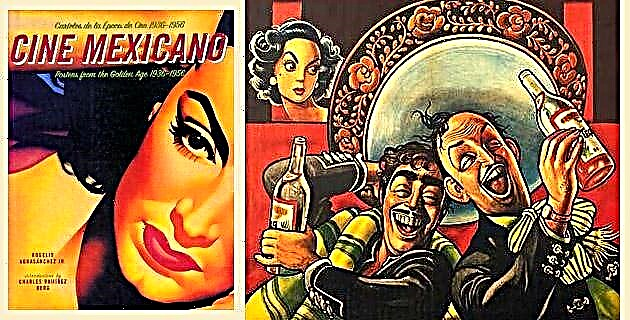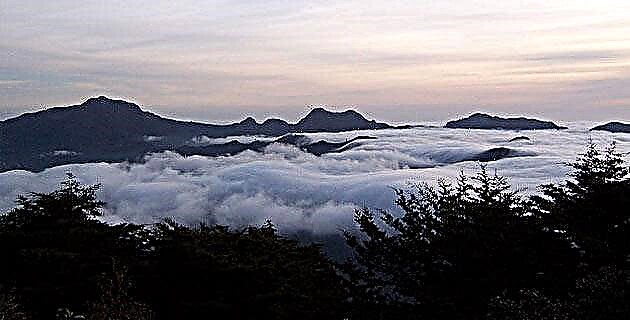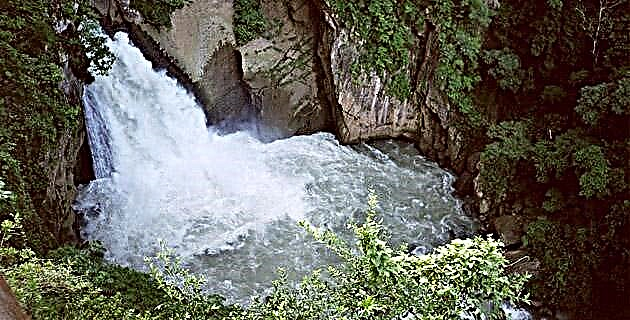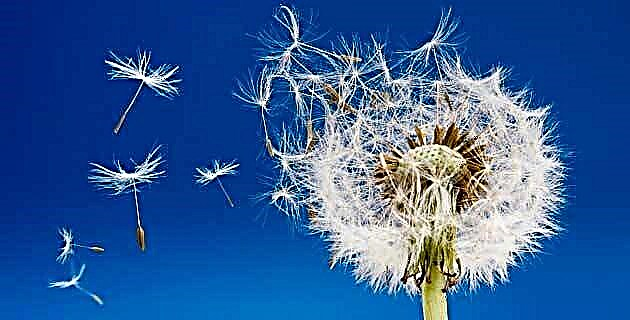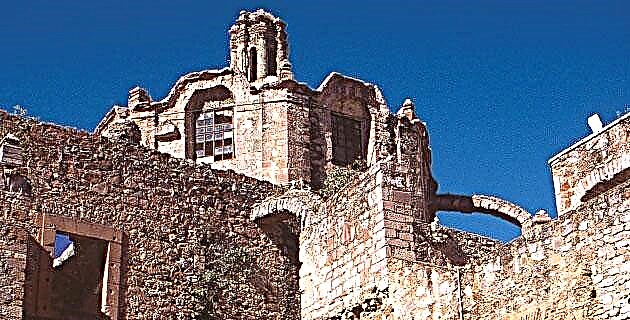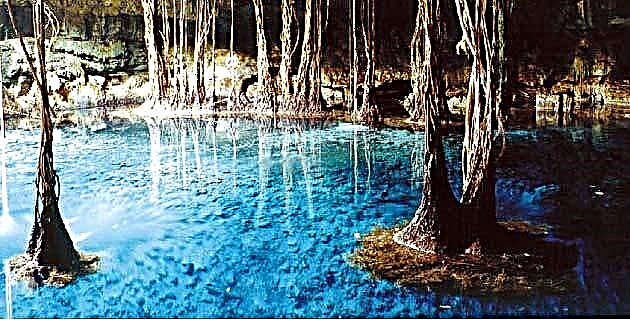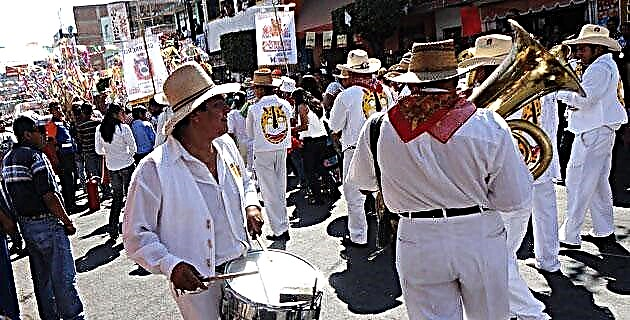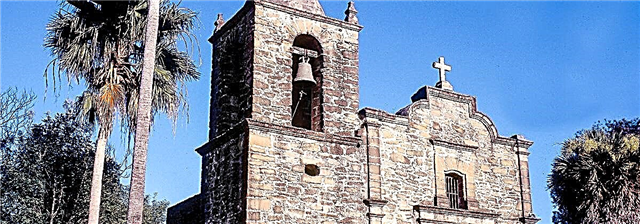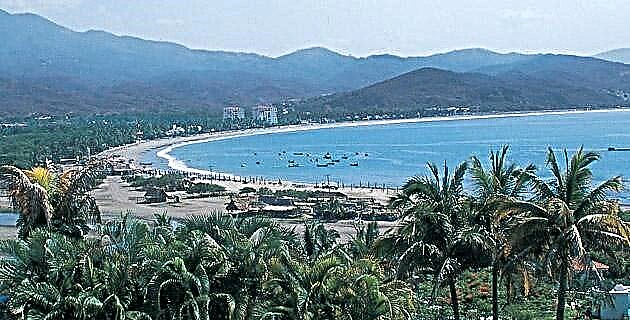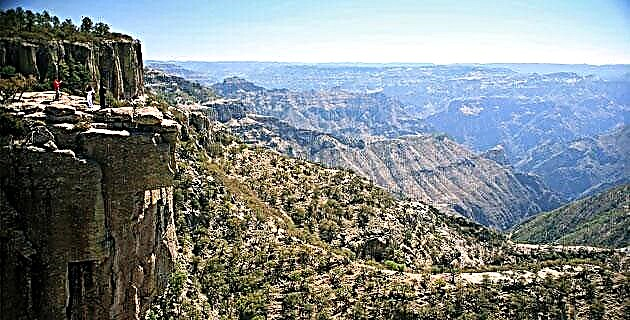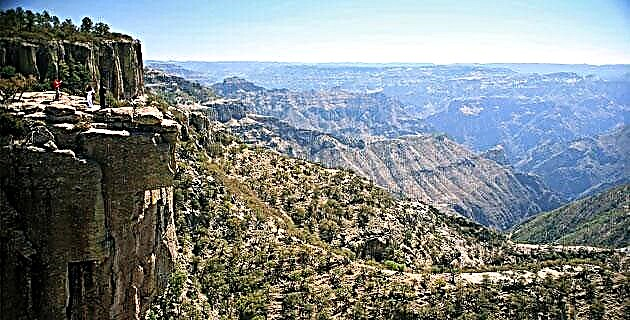
Although this 1,640 m. It is shallower than that of Urique, Cobre, Sinforosa or Batopilas, some of its viewpoints are superb because the verticality of the canyon is one of the largest and its width one of the smallest.
In such a way that the abysmal gorges, of more than a kilometer of vertical depth, follow one another in a few hundred meters, which in other ravines occurs at distances of kilometers. It should be added that most of the Barranca de Candameña is within the Basaseachi National Park.
How to get
To visit the region it is necessary to go to the small community of Basaseachi, located 279 km west of Chihuahua, it is reached by the highway that goes to Hermosillo, Sonora. In the direction of Basaseachi, buses leave from the state capital, although it can also be accessed from the town of San Juanito, near Creel, there are 90 km on dirt roads that will soon be paved.
Basaseachi, a community of about 300 inhabitants, has limited services: two simple hotels, cabins for rent and restaurants, as well as a gas station. Although it has electricity, there is no telephone service. Within the National Park there are several areas for camping, but only those of the San Lorenzo ranch offer good services.
Sixty kilometers before reaching Basaseachi is Tomochi, a town with better equipment and services.
Viewpoints
In the Basaseachi waterfall, the viewpoint that is located right where the waterfall falls is impressive, since it offers our eyes an unusual view of the large waterfall and, as if that were not enough, it is here where the Barranca de Candameña itself is born. . From there a tourist path descends, between the vertical walls of the ravine, which reaches the base of the waterfall.
Halfway down we find the viewpoint of La Ventana, which shows another fascinating angle of this waterfall. Entering the Las Estrellas highway, the viewpoints -of Rancho San Lorenzo- are in front of the waterfall, on the other side of the ravine.
A path with difficult access leads to the Piedra Volada viewpoints at the top of this waterfall, and from there you can see the ravine, which encompasses one of the deepest and narrowest parts of the area. This view is imposing since you have ahead, about 600 or 700 meters away, the huge rocky wall of El Gigante, with a plumb cut of more than 700 meters and that starts from the bank of the Candameña River. From here it is only possible to see the waterfall descending about 15 meters with ropes, for which you have to master the technique of rappelling.
The Piedra Volada waterfall can only be seen in its entirety from the opposite wall, and to get to this spectacular viewpoint it is necessary to enter by vehicle from the community of Huajumar, leave the car and walk a little over an hour through the forest. Another place from where the waterfall can be seen is the Candameña River. To do this, you have to descend into the river from the Basaseachi waterfall and walk almost a day to where the Cajurichi stream joins the Candameña river.
Finally, we will mention that there are other viewpoints located on the route from Basaseachi to the mining community of Ocampo, 25 km from the first, at the bottom of the Barranca of the same name.
Waterfalls
Without a doubt, the main attraction that the Barranca de Candameña offers to its visitors are its two formidable waterfalls: Basaseachi with a 246-meter waterfall and Piedra Volada with 453 meters. The first is the best known and most visited of the entire mountain range and one of the most accessible, since it can be reached by vehicle. However, the largest waterfall in the Copper Canyon, and in the entire country, is Piedra Volada, discovered only in September 1995. Its stream is fed by the waters of the stream of the same name and it should be noted that during the months of low water, its flow is so low that the waterfall is not fully formed. It is only possible to see it in its entirety during the rainy months, which are from June to September and in winter. Both waterfalls are surrounded by pine and oak forests and delimited by individual cliffs, which in the case of Piedra Volada exceed half a kilometer of free fall.
On the way to Ocampo, the aforementioned mining town, there is the small Abigail waterfall, with a drop of about 10 meters. Its curtain has a small cavity, which allows you to see the waterfall from inside.
Caves
Near the Stars, a little before (bequeathing to Basaseachi, is the famous cave of Father Glandorff, one of the most famous missionaries of the 18th century Tarahumara, who according to oral tradition lived in this cavity.
In the Candameña region there are a series of small caves and rock shelters that housed old adobe houses, apparently from the Paquimé culture. These types of buildings are known locally as Coscomates, and there are several of them around the San Lorenzo ranch.
Mining towns
In the vicinity of Basaseachi we find Ocampo, Morís, Pinos Altos and Uruachi, all of them still preserve the typical style of the mining towns of the mountains with an architecture of the 18th and 19th centuries. In these towns you can see large two-story adobe houses with their wooden railings and painted in intense and contrasting colors.
Ocampo was established in 1821 when the mines that continue to operate to this day were discovered; Moris was a missionary town that became a miner since 1823 when it completely changed its appearance; Pinos Altos was founded in 1871 and became famous because it starred in one of the first mining strikes in the country, which was violently repressed by the Porfirian forces; and Uruachi has its origin in the year 1736 when the exploration of its mines began.
Route of the missions
The beautiful region of the Barranca de Candameña shelters, from the colonial era, some Jesuit missions, among them are: Nuestra Señora de Aranzazú de Cajurichi (Cajurichi, 1688) and Santiago Yepachi (Yepachi, 1678). The latter still preserves in its main altar a series of oil paintings and altarpieces dating from at least the 18th century.
La Purísima Concepción de Tomochi (Tomochi, 1688), is a famous town because it staged in 1891 one of the most violent uprisings prior to the Revolution.
Jicamórachi houses an original adobe church, dating from the late 17th century. In this community the Tarahumara Indians produce a very characteristic pottery of them.
Streams and rivers
The route of the Candameña River is recommended, which is rich in pools, rapids, small waterfalls and places of great beauty. It is an itinerary that lasts four days to the old Candameña mineral, now semi-abandoned. In the Durazno and San Lorenzo streams, feeders of the Basaseachi Waterfall, camping sites abound.
Indigenous festivals
In this region, the closest Tarahumara community is that of Jicamórachi, along the Uruachi direction. The closest indigenous population to Basaseachi is Yepachi, a Pima community 50 km to the west.
The most important indigenous ceremonies in the region are those celebrated by the Pimas of the Yepachi community. The most striking is that of Easter and the bosses. It is worth attending these festivals and visiting this mission from the late 17th century.
Flora and fauna
The National Park provides protection and conservation to a large number of birds, among which is the coa or flag bird, a species in danger of extinction. Herds of wild boar and some groups of deer are frequently seen and, if you are patient, you can see freshwater otters in the pools of the Candameña River, as well as badgers and raccoons. There are many animals that you will appreciate in this area, we ask that you respect them and do not like them in any way.

